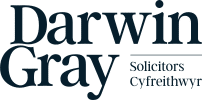March 11, 2021
During the highly anticipated Budget 2021 announcement on 3 March, the Chancellor of the Exchequer revealed that the Coronavirus Job Retention Scheme (CJRS), which was created to provide financial support to individuals and businesses during the pandemic, will be extended until 30 September 2021.
However, in addition to this, the Chancellor announced that the Government will be funding a £100m ‘Taxpayer Protection Taskforce’ which will enable HMRC to investigate those who have made fraudulent claims under the CJRS – so called “furlough fraud”.
This announcement reflects a growing concern from HMRC that many individuals and businesses have been taking unfair advantage of the Government funded schemes. In September 2020, HMRC CEO, Jim Harra, stated that HMRC believed that between 5% and 10% of claims related to the furlough scheme were fraudulent. According to a National Audit Office report published in October 2020, this was equated to being worth between £2 billion to £3.9 billion.
The creation of the Taxpayer Protection Taskforce, which will be one of the largest fraud taskforces ever created, and its significant Government funding, demonstrates the scale of the problem as well as the Government’s determination to crack down on those committing furlough fraud.
What is furlough fraud?
In order for a company to benefit from the CJRS, furloughed employees must not do any work for their employer or for another associated business. Employees can, however, work for a different employer or volunteer in the community as long as they are not creating revenue or providing a service for their own employer. Employees on furlough can also undertake training, provided the training is both directly relevant to the employee’s employment and agreed between the employee and employer prior to being undertaken.
Furlough fraud occurs when employers deliberately claim back wages under the CJRS for an employee they know is carrying out work for them or claim wages for fictitious employees.
The flexible furlough scheme, introduced in July 2020, which allows companies to bring employees back to work part time, has arguably made it more difficult to detect incidents of furlough fraud.
Employers will be deemed to have committed fraud for flexible furlough claims if they claim wages for employees on days that they are actually working. However, it is often difficult to prove which days furloughed employees are working.
What are the potential consequences for employers who commit furlough fraud?
Employers should be aware of the following potential consequences of abuse of the scheme:
-
Claw-back of funds: Employers who are found to have claimed fraudulently under the CJRS will be required to repay the monies back to HMRC.
-
Income tax and penalties: Section 106 and schedule 16 of the Finance Act 2020 (FA 2020), which came into force on 22 July 2020, gives HMRC the power to raise income tax assessments to recover CJRS payments from recipients who were not entitled to the payments, or where CJRS payments have not been used to pay furloughed employee costs. It also gives HMRC the power to charge penalties in cases of deliberate non-compliance or where a person who has claimed a CJRS payment deliberately does not use it for the costs it was intended to reimburse.
-
Individual liability: If directors or partners play any role in committing furlough fraud, they are at risk of facing charges under the Criminal Finances Act 2017.
-
Criminal liability: Employers are at risk of criminal sanctions if they commit furlough fraud. The first reported arrest of an individual suspected of furlough fraud was made in July 2020.
By extending the CJRS until September 2021, the Government has clearly recognised the continued need to provide financial support to individuals and companies. However, as the financial consequences of furlough fraud increasingly come to light, the Government has indicated that it is prepared to take an unforgiving approach to ensure that the cost of furlough fraud is not too high.
 Crack Down on Furlough Fraud – Potential Consequences for Employers
Crack Down on Furlough Fraud – Potential Consequences for Employers


















